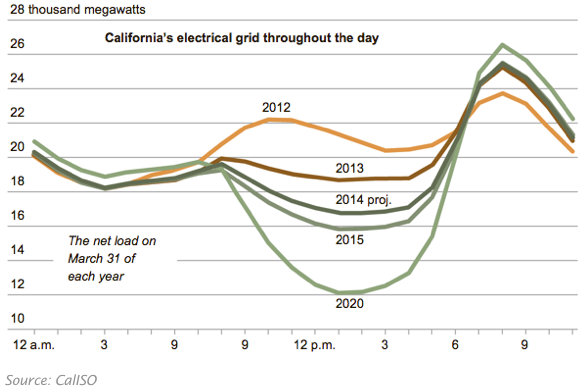The UK needs 300,000 new houses a year. 'Pre-fabs' are the only way of achieving this.
The UK government recently abandoned the long-standing target that all new homes should be zero-carbon. Its justification was that high insulation standards raise the cost of houses and makes the current shortage more difficult to alleviate. And this was before we faced the need to admit many tens of thousands of refugees.
The government’s policy change is silly. I’ve written here before about how improving energy efficiency in existing houses is usually very expensive. By contrast, better standards in new houses are easy to achieve. It makes no sense to compromise building standard improvements. But the government’s mind is made up. So what should we do now?
The first priority is completely clear: we need to stop building new homes on muddy building sites using construction techniques unchanged since 1350. Instead, we should shift to modular, pre-fabricated housing, built in factories and only assembled on-site. For the first time, we’re seeing small, relatively cheap and comfortable tiny homes designed to be manufactured precisely. Precise measurements – impossible in homes constructed on building sites – mean better air-tightness and improved insulation. You get near zero-carbon performance at virtually no incremental cost.
The last time the UK faced a desperate housing shortage similar to today was in 1945. About 150,000 ‘pre-fabs’ were built and many stayed in place long after their design life of 20 years. Some suffered from damp, but there’s no reason why today’s pre-fabs should experience this problem. Factory-made are built successfully around the world; the UK is an outlier in using medieval construction techniques. The Huf House, a range of prestige German manufactured houses, sells for millions of Euros across Europe.
Here are five different designs developed by companies in the UK over the last few years. In my view, they all look good. However you may disagree and think that new homes should mimic the look of houses around them. I want to suggest in response that these modern houses are relatively cheap, use little energy, are massively easy to plonk down on concrete piles and, vitally, can provide people who would otherwise be in squalid rented accommodation with a decent place to live. In my view, this outweigh visual objections. Good housing for all has to be the UK’s top priority, not the maintenance of some particular look to a street or neighbourhood. Aesthetic consistency is an unaffordable luxury if we are to succeed in building hundreds of thousands more houses a year.
Here’s the first design. Green Unit, based near Oxford, makes an elegant curved house that is light and warm. I’ve been in one and even the smallest variant would be a lovely place for two people to live. The company says the Unit has a design life of over 40 years. The price is about £120,000 for living space of 80 square metres. (This is before land costs but including site preparation).
Source: www.greenunit.co,uk
Dwelle comes from Manchester. 45 square metres of space, including two double bedrooms, will cost around £100,000 excluding the price of the land. 45 square metres isn’t huge but this is enough for a small family if space is well configured. For comparison, the average new home being built in the UK at the moment is about 85 square metres in size.
Source: www.dwelle.co.uk
Y Cube is the new design from Richard Rogers’ studio. It seems to be mostly sited in urban locations, such as a Merton in London. This house is designed around a target cost of about £1,400 a square metre, perhaps two thirds of what a conventional small semi would cost. There’s criticism of some of its more untraditional aspects. But the views of the people who have moved in carry more weight with me. They seem to like their homes a lot.
Source:www.ymcalsw.org/ycube
QB2 is the innovative tiny house from Mike Page at the University of Hertfordshire. Attracting wide interest from TV programmes and newspapers, this accommodation uses a very small 4 metres by 3 metres footprint. It can go in many suburban gardens. Heating and lighting will be very low cost indeed. At around £45,000, this is expensive per square metre of living space, but it works super-efficiently as a dwelling for young people who might otherwise be trapped in their parents’ home.
Source:http://www.cubeproject.org.uk/
Lastly, here’s something that looks more like a standard home. The WeeHouse provides a two bedroom home of 68 square metres for £99,000. At less than £1,500 per square metre, this is well under the cost of a traditionally constructed house.
Source:theweehousecompany.co.uk
None of these houses get rid of the appalling constraint on housing developments provided by the restrictive planning laws, the high price of land or the dead hand of large developers.
So my proposal is this. We should accept that the UK needs to build housing on greenfield sites and give these homes planning permission for 20 years in areas currently not zoned for housing. We might also insist that they are all screened by fast growing trees or other vegetation so their visual impact is limited. We should also allow unlimited use of gardens for single story buildings without requiring planning permission. Third, we should encourage ‘self-build’, allowing individuals to buy the kits of the houses above and construct them themselves. QB2, for example, makes this perfectly possible.
Lastly, of course, we need to get local authorities to allow these homes to be plonked pretty much anywhere there is space in urban areas. There’ll be no garden but this is a small cost to getting people off the streets. Without the need for soil remediation, which is a big costof brownfield housing development, a large number of smallish areas within cities become much more available for housing.
None of this would be popular but I cannot see any alternative.








































